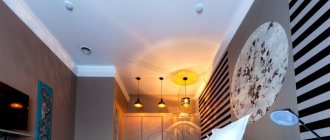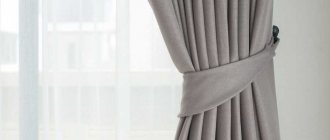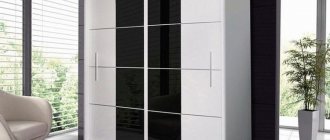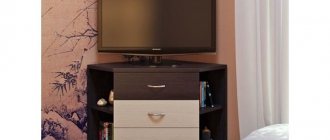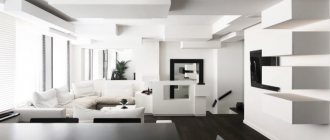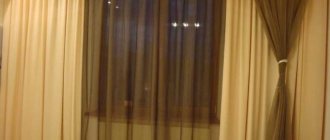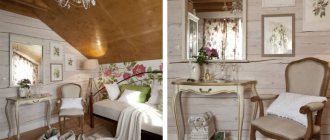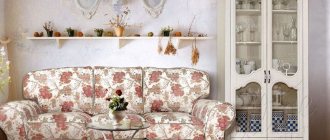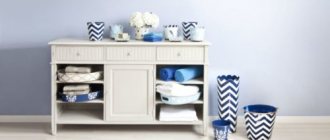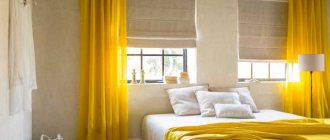People have never liked having their windows open to all views and sunshine. Therefore, windows are usually curtained with cloth.
If you remember history, tulle first appeared a long time ago, several centuries ago. He was needed for the same thing he is needed for now.
Thus, there was a special atmosphere in the room, especially in royal estates. Over time, needs began to grow and manufacturers managed to make tulle in different colors and shades.
But still the most popular color is white, and beautiful white tulle still pleases many household members.
Fabric type
Thin curtains are now sewn from the following fabrics:
Tulle veil. The white tulle from the veil turns out to be quite dense and soft. This effect is achieved due to the fact that polyester threads in the fabric are intertwined with cotton or wool threads.
Organza. Organza tulle is also made from polyester, but without the addition of natural threads. The fabric turns out dense, but thin. It transmits light well, but traps air. This quality is good to use for decorating a balloon block. The fabric will allow sunlight to pass through and protect the owners of the house from drafts.
Mesh fabric. Modern mesh looks like an almost solid canvas. The fine mesh allows air and light to pass through perfectly, but quickly accumulates dirt. Therefore, it is better to buy white tulle for the kitchen from other materials.
When choosing a material for white tulle, it is worth remembering that the natural threads in the fabric can quickly turn yellow. And such tulle will quickly lose its original appearance, especially if the window is located on the sunny side of the house.
What types of tulles are there?
Tulle is a general term. Tulle is a translucent and transparent, delicate, light, flowing fabric. This term refers to smooth, mesh or woven patterned fabrics, here are some of their varieties:
- lace is an openwork textile with an interweaving of natural or synthetic threads in the form of an elegant pattern, the elements of which are interconnected, without a fabric base, the openwork elements rhythmically alternate with a dense pattern;
- guipure (French lace) - openwork airy fabric with a lace pattern on a mesh;
- organza - elastic transparent or translucent fabric made of synthetic fibers, with shine and shimmer;
- crystallon - a type of organza, thin, light, translucent fabric, durable, elastic;
- veil - translucent delicate fabric made of the finest silk or cotton threads;
- chiffon (nylon) - thin transparent fabric made of natural or artificial silk;
- crepe chiffon - matte, airy, translucent, but denser fabric made from natural or mixed raw materials, rough to the touch but slippery;
- mesh, or tulle - a transparent fabric of cellular weave made of natural or synthetic threads, with cells of different sizes and shapes;
- gossamer - an airy thin transparent fabric made of synthetic fibers of various weaves;
- linen tulle - fabric made from thin linen threads or mixed fibers;
We also recommend: Curtain design options for the kitchen
- cambric is a soft, light, translucent fabric made of very thin cotton or linen, or mixed fibers;
- header - fabric made of natural, synthetic or mixed fibers, the surface is crinkled and cannot be smoothed out;
- “Rain” tulle is a type of light, airy fabric in which thickened threads are woven into a thin base, creating the illusion of thin streams of rain.
There are many more varieties of each of the above types of tulle fabrics. In addition, they can be produced with additional decorative elements: embroidery, hemstitching, lurex, sequins, rhinestones, photo printing, etc.
In addition, tulle textiles are produced with a smooth or textured surface. Smooth tulle fabric consists only of uniform thin threads. Textured tulle is a variety of lace, patterned, and mesh fabrics.
Tulle color
White tulle can have many shades. The choice of shade depends on the overall color scheme of the room and the color of the shade curtains, if any.
Snow-white tulle is suitable for rooms decorated in warm colors. A classic for the living room is the combination of snow-white tulle with brown curtains.
Also, pure white color will emphasize the atmosphere of coldness and severity in high-tech interiors.
Creamy tulle will be harmonious in an interior decorated in cool blue tones and gray colors.
Material selection
Modern tulle is made from a variety of fabrics, but most often these are synthetic materials. Let's take a closer look at the pros and cons of each fabric.
Veil:
- soft, smooth and delicate to the touch;
- denser than organza and softer;
- offers many color options;
- better protection from the sun.
However, the veil also has significant disadvantages - for example, it gets dirty much faster and is much worse to clean. It deteriorates in the sun and is quite subject to unwanted electrification. Easily wrinkles and tears. It is better to wash with liquid detergents and very carefully.
Organza is a fabric made of polyester and silk; it is much easier to wash compared to a veil and is much less afraid of dust, sun, and electricity. Although light and airy, it is also very durable.
Usually organza is a much better option compared to a veil, which has only one drawback - price. Producing quality material is expensive.
Important! Not long ago, a wonderful option appeared on the market called micro-veil or semi-organza. He took the key advantage of the veil over organza - softness, while maintaining the elasticity and other advantages of organza. It is worth recommending if you are not short on funds.
Finally, the largest type of tulle is mesh tulle. One of the significant advantages of the mesh is that it does not require ironing. You need to wash it by hand and quite carefully, but still, compared to a veil, there is less chance of damaging it.
Let's summarize: most often the best, but least budget choice is organza.
White tulle in different rooms
For the kitchen, it is better to choose pure white tulle made of synthetic fabric. Such a curtain will not catch fire if the wind accidentally blows it towards the stove and will not accumulate dust and soot.
To decorate the living room, you can use tulle of different shades and tulle with a pattern. The design may be white, but have a different texture or made with thin lines of a different color. Also in the living room, combinations of tulle in white and other colors, black and white tulle with wide stripes, look good.
For a children's bedroom, white tulle can be complemented with bright curtains or tiebacks made of multi-colored fabric.
How to choose snow-white curtains
To prevent the curtains from looking like hospital ones or too cheap, you can choose a material for the curtains that has a floral pattern or ornament. This will visually expand the space of the room. To create a mysterious atmosphere in the interior of your bedroom or living room, you can choose white tulle with a black pattern.
Golden tulle lifts the mood well. It can be hung in rooms located on the north side. White curtains with gold patterns to create a light atmosphere will be a wonderful addition to any window.
Despite all the attractiveness of polyamide curtains, it is better not to use them, since the fabric can be destroyed when exposed to sunlight. Popular is the material crystal with original rainbow tints on the curtains. You will need to take care in advance about choosing the right way to hang them.
You may also be interested in: Using red tulle in the interior - tips and photos
Typically, curtains are secured with crabs or hooks. In the first case, you will have to often remove and hang the white canvas, which requires regular maintenance. It's quite tedious. If you fasten curtains with hooks, the edges of the material constantly wear out.
It is best to use modern clips or eyelets. A special sealant is suitable to give the product the required shape. This will ensure that the grommet rings are installed without risk of material damage.
Tulle in a room with a low ceiling will visually raise its surface if the fabric is white. This will give the room a spacious appearance. In this case, the cornice should also be white or hidden under a lambrequin. The cornice is attached to the very ceiling. The more invisible the cornice, the better it is for white curtains.
Tulle cornice
To attach the cornice, various types of cornices are used:
- Tubular;
- Profile;
- String.
The cornice can be mounted above the window opening or on the ceiling. Tulle looks most laconic on the ceiling profile cornice.
For complex structures with several layers, a traditional tubular cornice with several rows is usually used.
String metal cornice is more often used in high-tech style rooms. Laconic tulle without decoration is hung on it.
To drape soft versions of tulle, thin tiebacks made of the same fabric or thin cords can be used.
White tulle is the most standard window design option. However, if you choose it carefully, choose a shade, pattern or embroidery, interesting texture, it will decorate your home and make the interior more interesting.
Latest recommendations
For any design you can choose the appropriate tulle. After all, today the variety of styles and fabrics is great. You don't have to choose a classic tulle color. It is worth choosing a color that exactly suits the room and its image.
Also avoid incompatible colors and styles. The main thing is to take pieces of fabric before buying and see what suits your home and how everything fits together.
You'll know right away when you choose the right fabric and shade. Take your time and you will perfectly complement your apartment.
Photo of white tulle
Types of curtains
With the help of curtains you can choose a lot of solutions from simple to complex.
Net
There are large and small ones. When choosing these curtains, you should consider the level of lighting in the living room. When decorated it looks original and unusual.
Cobweb
Thanks to this type of curtains, you can decorate your living room interior in an original way. They look especially good in modern, shabby chic or classic styles.
Rain
Translucent fabric with splashes that look like fine rain. It will add a touch of mystery to the living room interior and protect the room from bright sunlight.
Pleated
The canvas with numerous folds visually looks very impressive and elegant.
Thread
They filter light especially beautifully and do not overload the space in the hall. Can be combined with any interior design.
Double
Used to create unique images using several colors at once. Such curtains in the hall look much more interesting and original than ordinary ones.
See also ideas for two-tone curtains in the living room.
The photo shows a room with double curtains on the window.
Care
Caring for the veil is quite simple. Curtains can be washed by hand and in the delicate wash mode at 30-40 degrees. Non-chlorine bleaches can only be used on white veils. With proper care, the material does not shrink. Lightweight fabrics are not wrung out or secured with clothespins, as unsightly creases form on the fabric. Iron at 100 degrees through gauze. The veil dries instantly, thanks to its ease of removal and hanging.
You can sew tulle from a veil using a regular sewing machine. You just need to take into account the shortcomings of the fabric: it crumbles and warps during the cutting process. The fabric is produced in a width of 2.8-3 m, which allows you to carry out any projects, but when purchasing you need to pay attention to the appearance: sometimes there are weaving defects.
If you need high quality tulle and an interesting design, you can order voile curtains made from the Soffitel studio in Moscow. We will develop an idea from scratch to suit your interior, select stylish materials, and organize delivery and hanging of the product.
Color palette
Color can not only transform the environment, but also influence people:
- whiteness fits into any stylization, visually enlarging the room;
- the beige tone hides defects in frames and walls;
- the brown color stands out for its richness and solemnity, matching the wooden furniture and being distinguished by its solidity;
- green color, close to nature, evokes positive emotions and has a calming effect;
- the lilac shade adds aristocracy and sophistication to the space;
- pink paint adds lightness and romance to the interior;
- the heavenly blue gives residents relaxation, relieving tension.
When planning changes to your home, you should not lose sight of these specific features.
Design and drawings
Voile curtains have a variety of designs from royal patterns, natural and geometric patterns, to subtle small prints. Each of them finds its place in interiors.
With embroidery
Embroidered designs bring sophistication and romance to the interior. Such airy curtains will perfectly complement the look of a living room, bedroom or nursery.
The photo shows openwork voile curtains in the kitchen area. Beautiful white cups, lampshade and kitchen fronts create an airy image.
Rainbow
Curtains with a rainbow motif will make the space positive and will also be a good addition to a child's room.
Patterns and ornaments
Light patterns on the curtain will emphasize the elegance of the window opening and the space as a whole.
Flowers
Floral motifs enliven any space and make it sophisticated.
Embossed
If you want to include a pattern in the space, then you can opt for embossed curtains. The most common motifs are monogram, butterfly, branches with leaves, geometry, etc.
Multicolor
Curtains with a gradient color transition from light to dark shades look unusual and sophisticated. Also in the textile industry, there is an ombre effect, different colors of which smoothly flow from one to another.
Multilayer
Curtains made from several rows of veil create a feeling of luxury in the interior.
